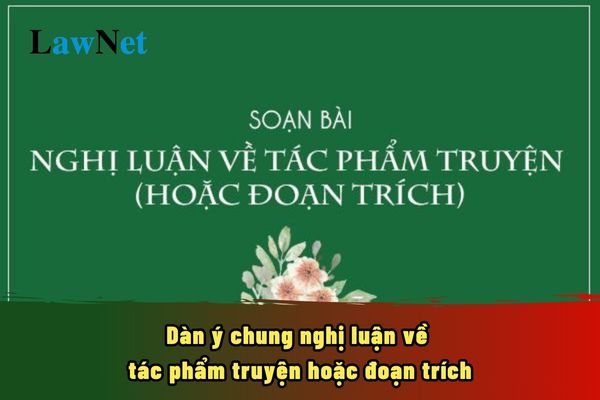What is the common sample outline for argumentative essays on story works or excerpts? What is the academic incentive scholarship amount for upper secondary school students in Vietnam?
What is the common sample outline for argumentative essays on story works or excerpts?
10th-grade students can refer to the following common sample outline for argumentative essays on story works or excerpts:
|
Common sample outline for argumentative essays on story works or excerpts I. Introduction: |
*Note: The information is for reference only./.

What is the common sample outline for argumentative essays on story works or excerpts? What is the academic incentive scholarship amount for upper secondary school students in Vietnam? (Image from the Internet)
Are upper secondary school students in Vietnam eligible for academic incentive scholarships?
Under Clause 1, Article 8 of Decree 84/2020/ND-CP, individuals eligible for academic incentive scholarships in Vietnam include:
1) Students in specialized upper secondary schools affiliated to institutions for higher education and students in specialized schools displaying excellent behavior grades, excellent learning capacity and at least 8.5 in scores of specialized subjects in the semesters in which scholarship is considered for award or achieving at least consolation prize in national, regional or international examination for gifted and talented students of the same year;
2) Students in schools for artistic, athletic and sports talents displaying at least good behavior grades and average learning capacity in the semesters in which scholarship is considered for award and earning prizes or medals in national, regional or international examinations of the same year;
3) Students studying in institutions for vocational education and institutions for higher education displaying at least good behavior grades and studying results and not disciplined by reprimand or any severer form during the semester in which scholarship is considered for award.
What is the academic incentive scholarship amount for upper secondary school students in Vietnam?
Under Clause 2, Article 8 of Decree 84/2020/ND-CP prescribing the academic incentive scholarship amount for upper secondary school students in Vietnam:
- In case of specialized schools and talented schools for artistic, athletic and sports talents: Scholarship awarded to a student must equal at least 3 times the current tuition of local specialized upper secondary schools;
- In case of specialized upper secondary schools affiliated to institutions for higher education: Scholarship awarded to students shall be decided by principals of the institutions for higher education but not lower than the highest tuition paid by the students for studying at the schools;
- In case of schools that do not charge tuition fees: Minimum scholarship shall equal 3 times the highest tuition fees of local upper secondary schools.
What are the duties of upper secondary school students in Vietnam?
Under Article 34 of the lower secondary school, upper secondary school and multi-level school charter attached to Circular 32/2020/TT-BGDDT, the duties of upper secondary school students in Vietnam are:
- Learn and train according to curricula and education plans of their schools.
- Respect their parents, officials, teachers and staff of their schools, and those older than them; maintain solidarity and mutual support in learning and training; conform to the charter and rules of their schools; and abide by the law.
- Take exercises and maintain personal hygiene.
- Participate in group activities of their schools and classes, Ho Chi Minh Young Pioneer Organization and Ho Chi Minh Communist Youth Union; help their families, join physical and social activities and environmental protection activities, and maintain traffic order and safety.
- Protect school and public property; contribute to fostering, preservation and enhancement of school traditions.

